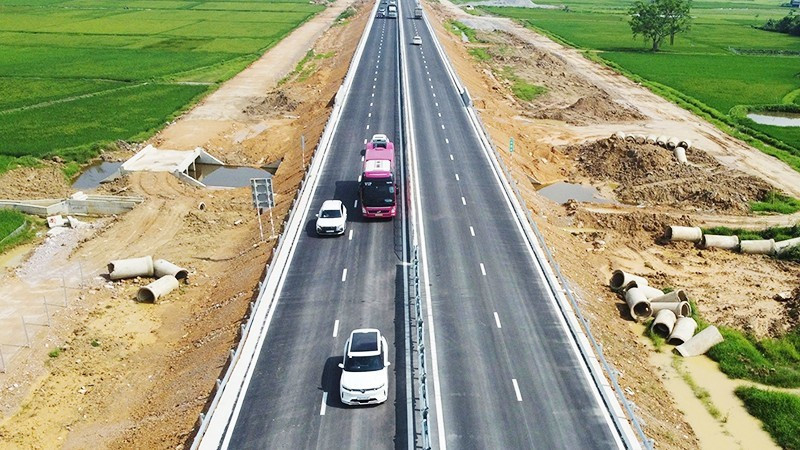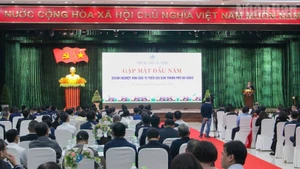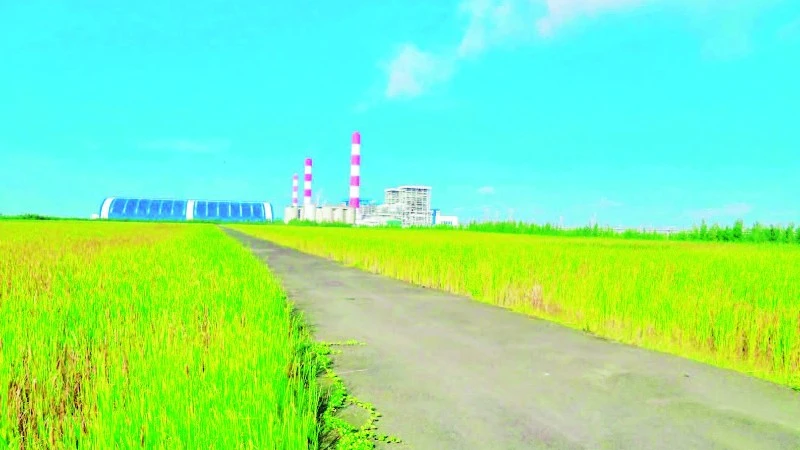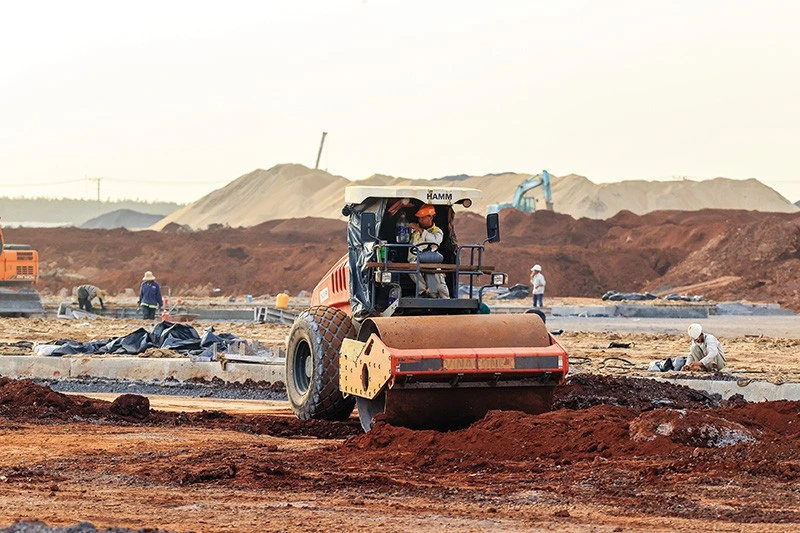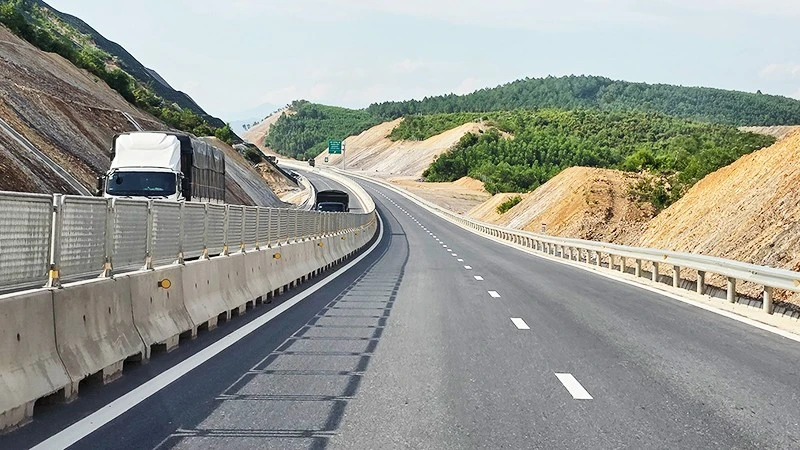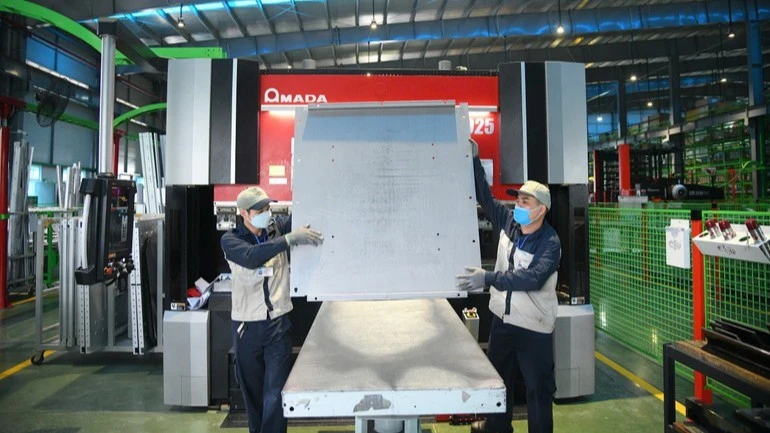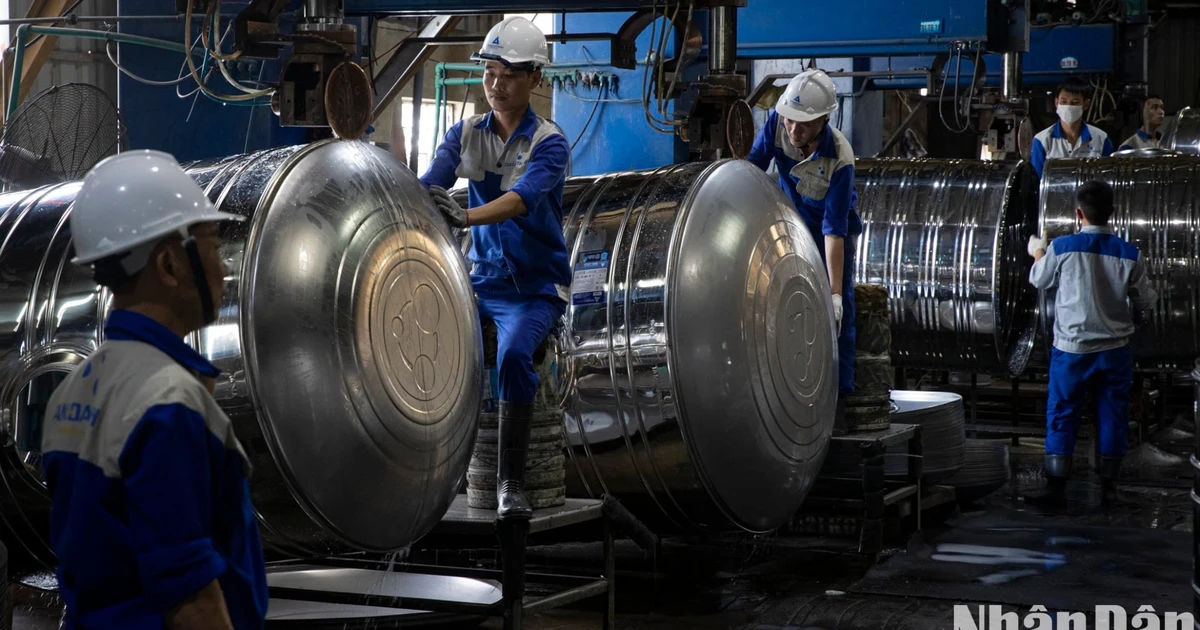According to the Ministry of Finance, by June 30, over 268.1 trillion VND in public investment capital had been disbursed, equivalent to 32.5% of the plan assigned by the Prime Minister — surpassing the same period last year both in absolute and relative terms (188.4 trillion VND was disbursed in the first half of 2024, equivalent to 28.2% of the annual plan).
Clear efficiency
The 2021–2025 North–South Expressway project is being simultaneously implemented across 12 component sections, covering a total length of 729 km. Among these, the Bai Vot – Ham Nghi section stands out for its accelerated progress and capital disbursement. Contractors have been required to operate around the clock with three shifts and four teams working in rotation, even through public holidays, while local authorities have committed to timely land handover and flexible licensing of material sources. By June, this section had completed over 70% of its workload, with technical opening expected within the second quarter — ahead of schedule.
Similarly, Long Thanh International Airport, with an investment of over 109 trillion VND for phase 1, had by mid-2025 reached peak construction across numerous components, including the passenger terminal, runways, drainage systems, and connecting transport. Progress has exceeded planned milestones thanks to close coordination between the investor, major domestic and international contractors, and the Government’s close leadership. This is also one of the few projects with disbursement rates meeting requirements and under strict progress control.
The Government’s resolute leadership, coupled with efforts from ministries, sectors, localities, investors, and contractors, has produced clear results. According to the Ministry of Finance, key projects are generally meeting or surpassing their targets, with none falling behind. To date, the country has completed and opened 16 expressways, increasing the total expressway network from 1,327 km to 2,268 km, aiming to reach the goal of 3,000 km by 2025.
In a recently published public investment report, Michael Kokalari, Head of Macroeconomic Analysis and Market Research Department, VinaCapital, pointed to two main factors driving public investment disbursement in the first half of 2025: heightened awareness of the need to accelerate public investment disbursement, and strengthened decentralisation and delegation to local levels, shortening procedures and directly executing key projects.
Notably, provincial-level disbursement is surging, up over 40% year-on-year. Some provinces and cities are undergoing administrative unit mergers alongside other Government initiatives, helping speed up project approvals.
Additionally, the National Assembly has passed measures allowing local governments to approve large-scale projects — such as airports and urban areas over 50 hectares — that previously required the Prime Minister’s review. Simultaneously, approval processes for public projects at both central and local levels are being streamlined, boosting disbursement.
Maintaining strong disbursement momentum
According to Kokalari, national-scale projects are also progressing rapidly, with construction start and completion times shortened for several major works. Notable examples include Long Thanh Airport (13 billion USD), ring roads in Ha Noi and Ho Chi Minh City (13 billion USD), and the Lao Cai – Ha Noi – Hai Phong railway (8.4 billion USD), all with timelines reduced by up to three years.
The legal framework is also being adjusted, particularly laws related to infrastructure investment, aiming to increase private sector participation in projects aligned with national infrastructure development goals, while simplifying public capital disbursement processes.
“These significant changes have positively impacted public investment disbursement, positioning Viet Nam favourably to sustain strong infrastructure investment momentum. The main obstacles to past disbursement delays largely stemmed from legal and administrative bottlenecks, which the above-mentioned legal reforms are gradually addressing.”
Not only foreign experts, but also domestic academics highlight the role and potential of public investment. According to Associate Professor Dr Nguyen Huu Huan, Head of Financial Markets, Faculty of Banking, University of Economics Ho Chi Minh City, the Government’s goal of disbursing 100% of public investment capital this year is a bold policy move, reflecting its determination to drive economic growth amid multiple challenges.
Particularly, public investment in sectors such as transport infrastructure, energy, healthcare, and education not only directly delivers a short-term “boost” to aggregate demand by creating jobs and income. More importantly, it strengthens long-term economic competitiveness.
However, according to Dr Huan, achieving this goal is not easy, as disbursement progress remains slow due to multiple reasons: land clearance obstacles, shortages of construction materials, planning difficulties, and hesitation or fear of responsibility in some areas. Meanwhile, the Law on Public Investment has been amended multiple times to address practical shortcomings, but implementation still faces bottlenecks, particularly in procedures, decentralisation, and flexibility in management.
To improve in the next phase and fully harness public investment’s role in economic growth, Dr Huan suggests continuing to simplify administrative procedures, shorten preparation, approval, and disbursement timelines, and, importantly, vigorously apply digital transformation and data interconnection among agencies to reduce paperwork overlaps and multi-level approvals. A “digital one-stop shop” mechanism could be considered for the entire public investment process — from project proposal and appraisal to land clearance and disbursement.
It is essential to enhance genuine decentralisation and delegation to localities, accompanied by appropriate risk monitoring and oversight mechanisms. Localities should be given greater autonomy to adjust project lists and reallocate funds among projects within the same group and objectives, provided they ensure transparency, do not increase total investment, and comply with overall plans. At the same time, post-audit activities should be strengthened, with strict handling of violations and prevention of corruption and waste.
Accountability should be raised for investors and project management boards, coupled with sufficiently strong penalties for delays, negligence, or failure to meet project quality standards. The law should also include provisions for regularly assessing the actual effectiveness of public investment projects, making information publicly available, and allowing independent organisations and experts to monitor progress. Innovation in public investment should be encouraged, such as flexibly applying public–private partnership (PPP) models, promoting socialised investment in suitable sectors, and using technology for real-time monitoring of project progress and quality.
Finally, it is necessary to develop a national public investment database system that is interconnected, transparent, and publicly tracks project progress and outcomes, thereby enabling social oversight and increasing public and business trust in the effective use of state budget funds.
Experts affirm that public investment disbursement is becoming a key growth driver. However, to maintain its effectiveness and achieve annual targets, continued procedural reforms, strengthened decentralisation, digital application, and enhanced implementation responsibility are essential.
Michael Kokalari, Head of Macroeconomic Analysis and Market Research Department, VinaCapital, expresses his idea: “The combination of administrative mergers, regulatory easing, and a focus on comprehensive economic development is helping to strongly boost infrastructure investment disbursement, seen as a critical driver of GDP growth.”
